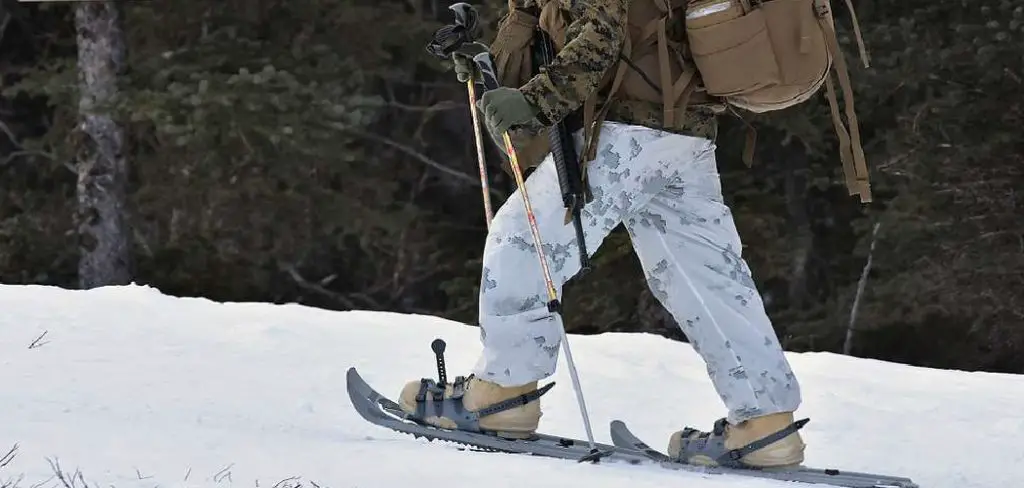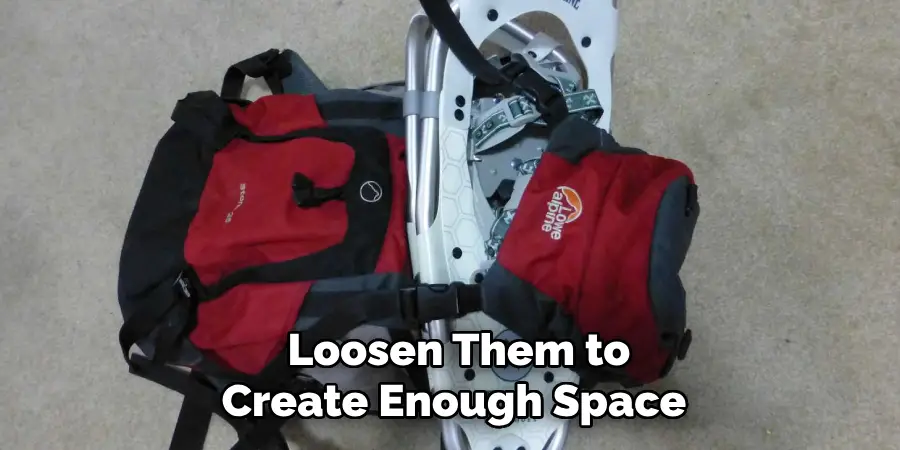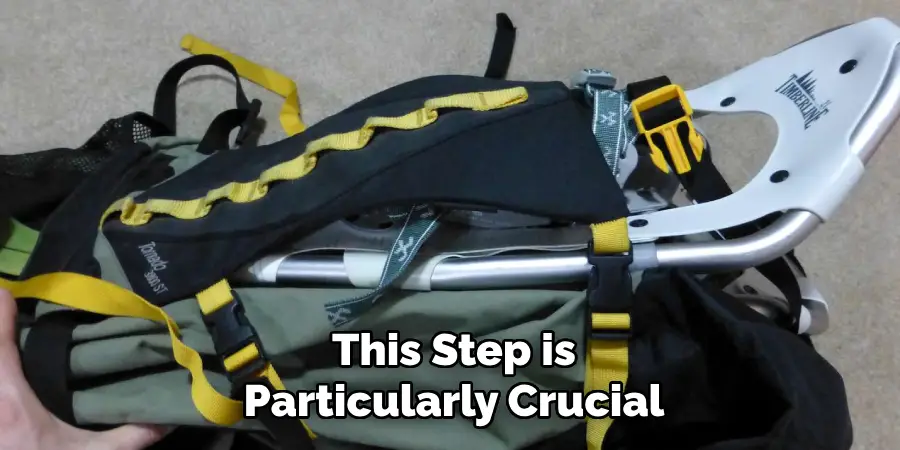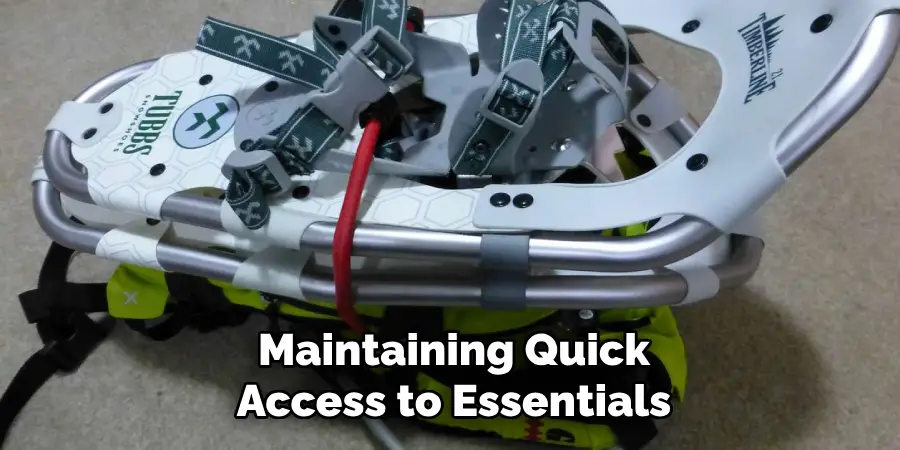Are you planning a snowshoeing trip and need to know how to attach your snowshoes to your backpack? Look no further—this step-by-step guide has you covered.
Attaching snowshoes to a backpack can be essential for any winter adventurer. Whether hiking through a snowy landscape or traveling between trails, securing your snowshoes properly will ensure they are both accessible and safely stored when not in use.

Knowing how to attach snowshoes to a backpack efficiently maximizes your gear’s safety and mobility. This guide will provide step-by-step instructions to streamline the process, ensuring a snug fit that prevents any shifting or damage to your equipment while on the go.
What Will You Need?
Before you begin, gather the following materials:
- A backpack with external attachment points or straps
- Snowshoes
- Carabiners or straps
- Optional: rope or bungee cords for additional security
It’s essential to ensure your backpack has external attachment points or straps explicitly designed for attaching snowshoes. These are usually found on the bottom of your pack and are often made from durable nylon.
10 Easy Steps on How to Attach Snowshoes to a Backpack
Step 1: Prepare Your Backpack
First, ensure your backpack is on a stable surface and has easy access to the external attachment points. Take a moment to examine the straps or loops, often located on the backpack’s sides, bottom, or front. These are the components that will securely hold your snowshoes in place. Verify that the straps are in good condition without any fraying or damage, as this will ensure they can withstand the weight and movement of the snowshoes.

If your backpack features adjustable or compression straps, loosen them to create enough space for the snowshoes. This initial setup is crucial for a secure attachment process and provides a solid foundation for the following steps.
Step 2: Position the Snowshoes
Place your snowshoes so the tails point downward, and the bindings face outward. This position ensures that the snowshoes follow the natural contour of the backpack and distribute their weight evenly. Align the snowshoes vertically along the side or the back of the pack, depending on where your backpack’s attachment points are located. This alignment is vital to avoid any imbalance while you carry the backpack during your adventure, and it prevents the snowshoes from protruding uncomfortably. Adjust the snowshoes to ensure they do not interfere with any zippers or compartments you need to access.
Step 3: Secure the Snowshoes with Straps or Carabiners
Once the snowshoes are correctly positioned, thread the backpack’s straps or carabiners through the bindings or frame of the snowshoes. Begin by securing the top section of the snowshoes to the upper attachment points on the backpack. Fasten the straps or secure the carabiners tightly to ensure the snowshoes are firmly in place. If using straps, adjust them to hug the snowshoes snugly, minimizing any potential movement.
Repeat this process for the bottom section of the snowshoes, attaching them to the lower attachment points on the backpack. Carefully tighten all connections, ensuring there is no slack, which will help maintain stability and balance during your snowshoeing adventure.
Step 4: Double Check the Security
After securing the snowshoes, double-check all straps or carabiners to ensure they are tight and secure. Gently shake the backpack to see if the snowshoes stay in place without shifting. This test will help identify any weak spots in the attachment and allow you to make necessary adjustments. Ensuring the snowshoes are securely fastened will prevent movement or noise, allowing for a safe and comfortable journey. If needed, consider using additional straps, bungee cords, or rope to reinforce the setup and add an extra layer of security.
A thorough check at this stage ensures that the snowshoes remain firmly attached throughout your adventure, giving you confidence as you traverse snowy terrains.
Step 5: Balance the Load
Once the snowshoes are securely attached, it’s essential to balance the load on your backpack. Distribute the weight evenly by ensuring that any other gear in your bag is positioned to counterbalance the snowshoes. Adjust the contents of your backpack if necessary to achieve a balanced weight distribution, making it easier and more comfortable to carry.

This step is particularly crucial if you have loaded your backpack with additional equipment or plan to be on the trail for an extended period. Proper weight distribution will minimize strain on your shoulders and back, allowing for a more enjoyable snowshoeing experience.
Step 6: Test the Fit
Before setting off on your adventure, it is essential to test your backpack’s fit with the attached snowshoes. Put on the backpack and pay attention to how it feels. Walk around a bit to ensure the weight is evenly distributed and the snowshoes do not cause discomfort or imbalance. Listen for any sounds that indicate movement or shifting, and adjust the straps or position of the snowshoes if necessary. Testing the fit effectively will help you make on-the-fly adjustments and give you peace of mind knowing your gear is securely fastened.
This trial run ensures a comfortable and safe snowshoeing expedition, preventing potential issues from arising once you’re on the trail.
Step 7: Customize for Comfort
After confirming that the fit is secure, customize the backpack to enhance your comfort during your snowshoeing trek. Adjust the bag’s shoulder straps, hip belt, and sternum strap to suit your body shape and personal preferences. Ensuring these are snug will help distribute the weight evenly across your body, reducing fatigue. Pay attention to any pressure points or discomfort and adjust to alleviate them.
This step is crucial, as a well-fitted backpack can significantly improve your endurance and enjoyment of the outdoor adventure. Tailoring the fit to your needs will allow you to focus on the journey ahead without distractions and minimize the risk of strain or injury.
Step 8: Plan for Easy Access
While ensuring your snowshoes and the rest of your gear are securely packed, consider the accessibility of essential items you might need frequently during your hike. Place items such as snacks, water, maps, or a GPS device in easy-to-reach compartments of your backpack. This strategic placement will save time and energy as you can access necessary items without unpacking the entire bag.

Moreover, maintaining quick access to essentials like a first-aid kit or sunscreen is crucial for safety and comfort. Planning for easy access enhances both the efficiency and enjoyment of your snowshoeing adventure, allowing you to focus more on the natural surroundings and less on logistical challenges.
Step 9: Review Weather Conditions and Adjust Accordingly
Before heading out on your snowshoeing adventure, reviewing the weather conditions and forecast for the day is essential. Understanding the expected weather will help you prepare adequately and stay safe. If inclement weather is anticipated, consider adjusting your plans or packing additional layers, waterproof gear, or other necessary items to protect against cold and wet conditions. Moreover, extreme weather conditions might impact trail accessibility or visibility, so having an alternative route can be beneficial. Staying informed enhances your safety and ensures a more enjoyable experience as you venture through wintery landscapes.
Step 10: Practice Leave No Trace Principles
As you embark on your snowshoeing journey, practicing Leave No Trace principles to minimize your environmental impact is essential. Stick to marked trails to protect fragile ecosystems and avoid disturbing wildlife habitats. Pack out all your trash, including organic waste like food scraps, to preserve the pristine condition of nature. Avoid collecting plants, rocks, or other artifacts that might degrade the natural setting. By being mindful of your footprint, you help maintain the area’s natural beauty, ensuring that future adventurers can enjoy it. Doing so fosters a responsible and sustainable approach to exploring the great outdoors.

Following these steps, you can effectively prepare your backpack for a snowshoeing adventure and enjoy a safe, comfortable, and memorable journey through wintery landscapes.
5 Things You Should Avoid
- Overloading the Backpack: Packing too much gear alongside your snowshoes can create an unmanageable load, leading to discomfort and fatigue. Prioritizing essentials and staying within your backpack’s weight limits is crucial to maintaining balance and wielding optimal control.
- Ignoring the Weather: Attaching snowshoes incorrectly without considering weather conditions can deteriorate their structure over time. Wetting straps or exposure to extreme cold might affect the mechanical strength and reliability of the snowshoes. Plan your attachment in a weather-proof manner to ensure longevity and readiness.
- Blocking Access to Essentials: Arranging snowshoes in a way that obstructs access to essential items in your backpack can be inconvenient and counterproductive. Ensure the placement allows you to reach for snacks, water, or emergency supplies easily, maintaining the flow of your adventure.
- Don’t use Single Straps: While using a single strap to attach snowshoes might seem faster, it can be hazardous. It strains the shoulder and back muscles excessively, causing pain or injury. Distributing weight evenly with multiple straps is safer and more comfortable.
- Neglecting to Leave No Trace Principles: Disregarding responsible outdoor practices like leaving behind trash or disturbing natural environments affects the environment and the experience of fellow hikers.
Conclusion
How to attach snowshoes to a backpack is essential for a comfortable and efficient snowshoeing experience.
By following the outlined steps—choosing the right backpack, securing snowshoes with multiple straps, adjusting for weather conditions, and planning for easy access to essentials—you ensure your gear is organized and accessible. Remember the importance of customization for comfort and adherence to Leave No Trace principles to minimize environmental impact.
Avoiding common pitfalls such as overloading or improper weight distribution can prevent unnecessary strain and enhance your journey’s enjoyment. You can look forward to a safe and memorable adventure through the wintery terrain with careful preparation.

